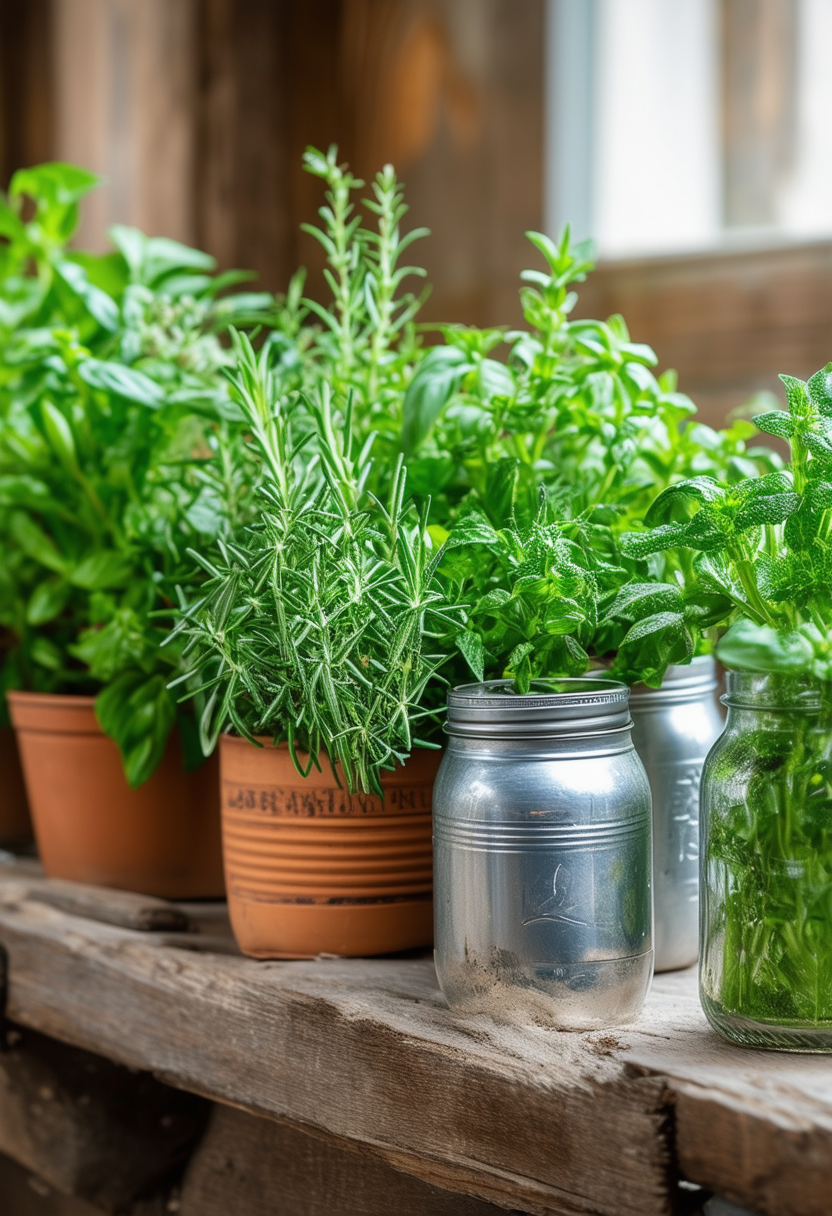Are you tired of constantly buying, and then ultimately wasting, fresh herbs from the grocery store? Why not take matters into your own hands and cultivate your very own herb garden? Not only will you have a ready supply of your favorite herbs at your fingertips, but you’ll also add a touch of greenery and freshness to your living space. In this article, we’ll explore some creative ways to cultivate your own herb garden, whether you have a spacious outdoor area or are limited to a tiny apartment balcony.
From vertical hanging gardens to repurposed containers, there are countless possibilities for creating a unique and practical herb garden that suits your space and style. With a little creativity and some basic gardening know-how, you can enjoy the satisfaction of growing your own herbs while adding a touch of natural beauty to your home. So roll up your sleeves, grab your gardening gloves, and let’s get growing!
Growing Your Own Herbs: A Beginner’s Guide
When it comes to cultivating your own herb garden, there are many creative ways to get started. One fun idea is to repurpose old containers such as mason jars, tin cans, or even old tea cups to plant your herbs in. Not only does this add a unique touch to your garden, but it also helps to reduce waste and give new life to old items.
Another creative way to cultivate your herb garden is to incorporate vertical gardening techniques. Consider hanging planters, wall-mounted herb gardens, or even a ladder garden. Vertical gardening not only saves space, but it also adds a visual interest to your garden and makes it easier to access and care for your herbs.
| Herb | Sunlight | Water |
|---|---|---|
| Basil | 6-8 hours | Regularly |
| Rosemary | 6-8 hours | Sparingly |
| Mint | 4-6 hours | Frequently |
Lastly, get creative with how you display and label your herb garden. Consider using chalkboard paint on plant markers or painting colorful designs on your pots. You can also create a mini herb garden in a repurposed wooden crate or even display your herbs in a tiered planter for a visually appealing arrangement.
Utilizing Small Spaces: Indoor Herb Gardening Tips
One of the best ways to bring a touch of nature into your home is by creating an indoor herb garden, even if you have limited space. With a little creativity and resourcefulness, you can easily cultivate your own herbs right in your kitchen or living room. Here are some creative tips to help you make the most of your small space and grow your very own herb garden.
Utilizing vertical space is key when it comes to indoor herb gardening. Consider installing floating shelves or hanging planters to maximize the space available to you. This not only adds a decorative element to your home, but also allows you to grow a variety of herbs without taking up precious counter or floor space. Be sure to choose herbs that will thrive in your specific lighting conditions and water them regularly to ensure healthy growth.
| Herb | Lighting Needs |
|---|---|
| Rosemary | Full sun |
| Basil | Partial sun |
| Mint | Partial shade |
Another creative way to cultivate your indoor herb garden is by repurposing household items as planters. Mason jars, tin cans, and even old tea cups can make charming containers for your herbs. Get crafty with paint or labels to add a personal touch to your herb garden. Remember to use well-draining soil and monitor the moisture levels to ensure your herbs are receiving the proper care they need to thrive.
Eco-Friendly Practices: Sustainable Herb Garden Solutions
Looking to create a sustainable herb garden? There are plenty of creative ways to cultivate your own herb garden using eco-friendly practices. One option is to repurpose old containers or mason jars to plant your herbs in. This not only reduces waste but also adds a unique touch to your garden.
Another eco-friendly solution is to compost your food scraps and use them as natural fertilizer for your herb garden. This helps reduce waste and provides nutrients for your plants to thrive. You can also consider using rainwater or a drip irrigation system to water your herbs, reducing the amount of water waste.
| Herb | Best Growing Conditions |
|---|---|
| Basil | Sunny location with well-draining soil |
| Rosemary | Full sun and well-drained soil |
| Mint | Partial shade with consistently moist soil |
there are many creative and sustainable ways to cultivate your own herb garden. By repurposing materials, composting, and using natural resources, you can create a beautiful and eco-friendly garden that benefits both you and the environment.
Enhancing Flavor and Health Benefits: Best Herbs to Grow at Home
Are you looking to enhance the flavor of your dishes while reaping the health benefits of fresh herbs? Cultivating your own herb garden at home is a fun and rewarding way to add a burst of freshness to your cooking. Not only will you save money on store-bought herbs, but you’ll also have the satisfaction of knowing exactly where your herbs are coming from.
One of the best herbs to grow at home is basil. This versatile herb is a staple in Mediterranean cuisine and adds a flavorful kick to salads, pasta dishes, and sauces. Basil is also known for its anti-inflammatory and antibacterial properties, making it a great addition to your garden for both taste and health benefits.
| Herb | Flavor Profile | Health Benefits |
|---|---|---|
| Rosemary | Woody, pine-like | Rich in antioxidants |
| Mint | Cool, refreshing | Helps aid digestion |


